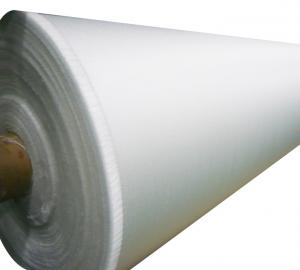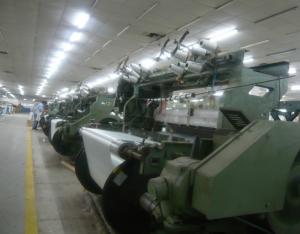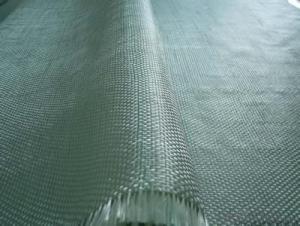Manufacturer of Fiberglass Fabrics 100g
- Loading Port:
- Shanghai Port
- Payment Terms:
- TT or LC
- Min Order Qty:
- 10000 M2 m²
- Supply Capability:
- 50000000 M2 Per Year m²/month
OKorder Service Pledge
OKorder Financial Service
You Might Also Like
Introduction of Fiberglass Fabric:
Fiberglass fabric is corrosion resistance, high intensity, electricity insulation, compatibility with other resin.Fiberglass fabric is widely used into electric insulation field for PCB or copper clad laminate.
Specifications of Fiberglass Fabric:
Fabric Count Warp×Fill(Per cm)
| Yarn(SI)
| Thickness(mm) (Rreference Only)
| Nominal Weight(g/m2)
| Weight Tolerance(g/m2) |
23.6×18.5 | 5 11 1×0 5 11 1×0 | 0.053 | 46.8 | 45.1-48.5 |
23.6×23.6 | 5 11 1×0 5 11 1×0 | 0.056 | 52.9 | 51.5-54.2 |
19.3×16.5 | 7 45* 1×0 7 45* 1×0 | 0.149 | 164.1 | 157.7-170.5 |
18.1×17.7 | 7 45* 1×0 7 45* 1×0 | 0.140 | 1654.0 | 158.0-171.0 |
23.6×19.7 | 6 33 1×0 6 33 1×0 | 0.125 | 148.0 | 142.8-153.2 |
20.0×10.8 | 9 331×0 9 74 1×0 | 0.135 | 146.2 | 142.1-150.3 |
20.5×20.5 | 9 34* 1×0 9 34* 1×0 | 0.114 | 138.3 | 133.6-143. |
23.6×22.0 | 7 22 1×0 5 11 1×0 | 0.079 | 78.0 | 75.6-80.4 |
22.0×18.9 | 7 22 1×0 7 22 1×0 | 0.084 | 90.9 | 88.5-93.2 |
23.6×22.8 | 7 22 1×0 7 22 1×0 | 0.094 | 103.8 | 100.7-106.8 |
26.0×21.7 | 7 22 1×0 7 22 1×0 | 0.095 | 108 | 104.8-111.2 |
17.3×12.2 | 9 681×0 9 68 1×0 | 0.173 | 203.4 | 198.0-208.9 |
17.9×13.4 | 9 68 1×0 9 68 1×0 | 0.18 | 210.0 | 204.5-215.3 |
17.3×11.4 | 9 68 1×0 9 102* 1×0 | 0.201 | 232.3 | 226.5-238.0 |
17.5×7.9 | 9 68 1×0 9 136* 1×0 | 0.254 | 227.8 | 221.1-234.7 |
17.4×10 | 9 68 1×0 9 136* 1×0 | 0.250 | 260.0 | 255.2-265.3 |
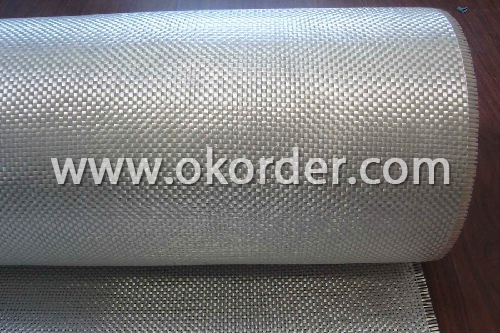
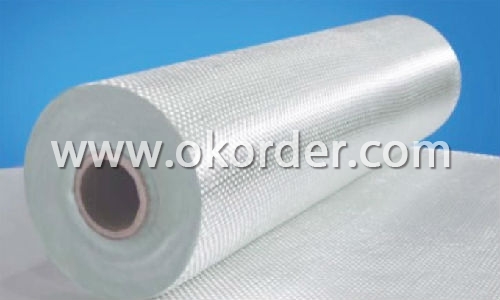
- Q:Can fiberglass fabric be laminated with other materials?
- Yes, fiberglass fabric can be laminated with other materials. Laminating refers to the process of bonding two or more layers of material together to create a composite material with enhanced properties. Fiberglass fabric is often used as a reinforcement material in laminates, providing strength and durability. It can be laminated with various materials such as resins, plastics, metals, and other fabrics to create composite structures with specific characteristics. The lamination process typically involves applying a layer of adhesive or resin onto the fiberglass fabric and then bonding it with the desired material. This allows for the creation of versatile and customizable materials that can be used in a wide range of applications such as aerospace, automotive, construction, and marine industries.
- Q:Can fiberglass fabric be used for reinforcement in sporting goods?
- Sporting goods can benefit from the use of fiberglass fabric as reinforcement. This fabric is widely recognized for its impressive strength-to-weight ratio, making it an excellent option for strengthening a variety of sporting equipment, including surfboards, kayaks, canoes, skis, and even hockey sticks. To create a sturdy and enduring composite material, the fiberglass fabric is typically combined with epoxy resin. The process involves saturating the fabric with resin and then applying it in layers to the desired area, providing added strength and rigidity to the sporting goods. This reinforcement aids in enhancing the overall performance and durability of the product. Furthermore, fiberglass fabric possesses corrosion resistance, light weight, and exceptional impact resistance, which contributes to its popularity as a reinforcing material for sporting goods.
- Q:Is fiberglass fabric resistant to chemicals and solvents?
- Yes, fiberglass fabric is generally resistant to chemicals and solvents.
- Q:Is fiberglass fabric resistant to chemicals used in aerospace industry?
- Yes, fiberglass fabric is resistant to chemicals used in the aerospace industry.
- Q:Can fiberglass fabric be used for making luggage?
- Yes, fiberglass fabric can be used for making luggage. Fiberglass fabric is known for its durability and strength, making it an ideal material for luggage that needs to withstand rough handling and frequent use. It is lightweight yet sturdy, which allows for easy maneuverability of the luggage while still providing protection for its contents. Additionally, fiberglass fabric is resistant to water and stains, making it a practical choice for luggage that may be exposed to various weather conditions. Overall, fiberglass fabric offers a reliable and long-lasting option for manufacturing luggage.
- Q:Is fiberglass fabric resistant to chemicals in water treatment facilities?
- Yes, fiberglass fabric is generally resistant to chemicals in water treatment facilities. It has excellent resistance to a wide range of chemicals, including acids, alkalis, and solvents, making it a suitable choice for various applications in water treatment facilities.
- Q:Can fiberglass fabric be used for making stage curtains?
- Yes, fiberglass fabric can be used for making stage curtains. It is a versatile material that offers durability, flame resistance, and excellent light transmission properties, making it suitable for stage curtains. Additionally, fiberglass fabric can be customized for different designs and sizes, allowing for creative and functional stage curtain options.
- Q:Are fiberglass fabrics suitable for use in the oil and gas industry?
- Yes, fiberglass fabrics are suitable for use in the oil and gas industry. Fiberglass fabrics offer several advantages that make them well-suited for various applications in this industry. Firstly, fiberglass fabrics are highly resistant to corrosion and chemicals, making them ideal for use in environments where exposure to oil, gas, and other corrosive substances is common. This resistance ensures the longevity and durability of the fabric, reducing the need for frequent replacements and maintenance. Additionally, fiberglass fabrics have excellent thermal insulation properties, which is crucial in the oil and gas industry where high temperatures are often encountered. These fabrics can withstand extreme heat and protect equipment and personnel from thermal hazards. Moreover, fiberglass fabrics are lightweight, yet strong and flexible, making them easy to handle and install. This characteristic is particularly beneficial in applications requiring the fabrication of complex shapes or structures, such as insulation jackets or protective covers. Furthermore, fiberglass fabrics have good electrical insulation properties, reducing the risk of electrical hazards in oil and gas operations. They can be used as insulation materials for electrical equipment, cables, and pipelines, ensuring safe and reliable operations. Lastly, fiberglass fabrics have a high dielectric strength, enabling them to withstand high voltage and prevent electrical arcing. This is especially important in the oil and gas industry, where the risk of electrical accidents can be significant. In summary, fiberglass fabrics are well-suited for use in the oil and gas industry due to their corrosion resistance, thermal insulation properties, lightweight and flexible nature, electrical insulation capabilities, and high dielectric strength. These qualities make them reliable and efficient materials for various applications within this industry.
- Q:Can fiberglass fabrics be used for reinforcement in wind turbine blades?
- Yes, fiberglass fabrics can be used for reinforcement in wind turbine blades. Fiberglass is a commonly used material in wind turbine blade manufacturing due to its high strength, durability, and lightweight properties. It helps enhance the structural integrity and performance of the blades, making them more efficient in capturing wind energy.
- Q:Can fiberglass fabric be used for making safety nets or barriers?
- Yes, fiberglass fabric can be used for making safety nets or barriers. Its high tensile strength, durability, and resistance to heat, chemicals, and weather make it a suitable material for creating reliable safety nets and barriers in various industries, including construction, sports, and transportation.
1. Manufacturer Overview |
|
|---|---|
| Location | Jiansu,China |
| Year Established | 1956 |
| Annual Output Value | |
| Main Markets | Europe, Americans, Middle East, South East Asia |
| Company Certifications | ISO9001:2008;ISO14001:2004 |
2. Manufacturer Certificates |
|
|---|---|
| a) Certification Name | |
| Range | |
| Reference | |
| Validity Period | |
3. Manufacturer Capability |
|
|---|---|
| a)Trade Capacity | |
| Nearest Port | |
| Export Percentage | |
| No.of Employees in Trade Department | |
| Language Spoken: | |
| b)Factory Information | |
| Factory Size: | |
| No. of Production Lines | |
| Contract Manufacturing | |
| Product Price Range | |
Send your message to us
Manufacturer of Fiberglass Fabrics 100g
- Loading Port:
- Shanghai Port
- Payment Terms:
- TT or LC
- Min Order Qty:
- 10000 M2 m²
- Supply Capability:
- 50000000 M2 Per Year m²/month
OKorder Service Pledge
OKorder Financial Service
Similar products
New products
Hot products
Hot Searches
Related keywords
